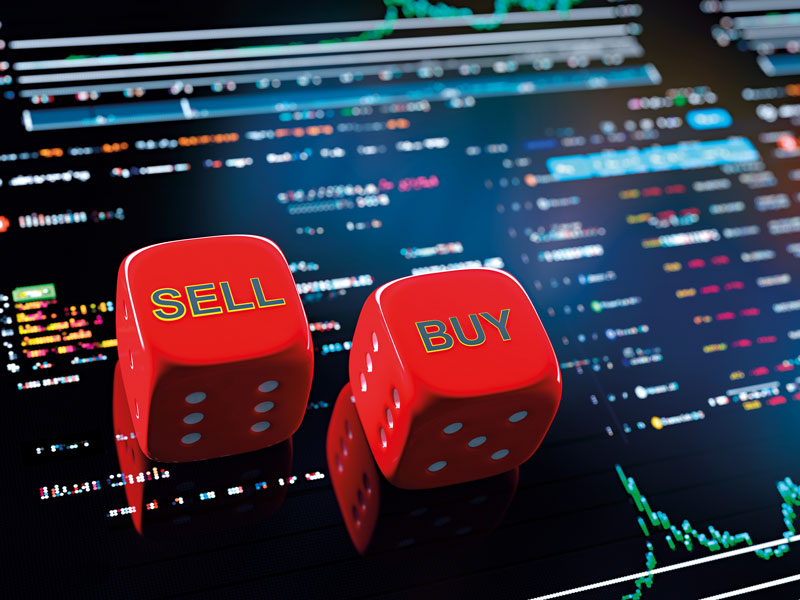
In Fontainebleau the hammer fell at the Osenat auction house in October 2022, denoting the end of a bidding war that resulted in a Tianqiuping-style porcelain vase selling for a little over €9m. This would not have been controversial, except that the expert had valued it at €1,500–€2,000 and so it had achieved roughly 4,000 times its estimate.
The consequences of what auction house president, Jean-Pierre Osenat, called “a serious mistake” by the expert resulted in their employment being immediately terminated. At first glance, this seems a little harsh given that there is scant evidence to refute their assessment save for the frenzy of interest from 300 mostly Chinese bidders. But, the market determines the value of a commodity and this hard lesson is taught daily to many millions of traders who take it upon themselves to decide what the price ought to be and get it wrong.
Where we have a group with the power to move the market as the bidders do in the above example, the poor expert is not much different than the average retail trader, poring over charts and news and trying to figure out market sentiment ahead of time. All they have to go on is what happened in the past. The auction house serves as a sort of full-service broker offering advice and making a profit on the commission. While they had a day that broke records in this regard, the reputational damage of being this wrong in their respective market is a bitter pill to swallow. They are supposed to know exactly where the market is at and if they don’t, who is to trust them? Asking them to put a price on anything is like rolling the dice. So how does the next expert price a similar vase from the Republic period? It’s not a job any market economist would want. All he knows is that some of them sell for €2,000 and some of them sell for €9m.
Pricing in subjectivity
The value we place on art is highly subjective, while the markets teach us that we should shoot for objectivity. Tell that to the auction bidders or indeed, the lady who has just learned her vase has sold for 4,000 times the asking price. And yet these factors must remain the same no matter what is being sold.
The market is made up of people, and our personalities, our emotional traits and character flaws inherently dictate our actions
But we mustn’t forget that the market is made up of people, and our personalities, our emotional traits and character flaws inherently dictate our actions. When we understand this, we understand that a candlestick chart doesn’t simply record price movement over time; it also charts us over time. We don’t need to look very hard for concrete examples of this.
During the 2020 run on gold, we see fearful investors rushing towards what is regarded as a safe haven, as a second wave of coronavirus bore ominously down upon the world. Russia’s invasion of Ukraine in February 2022 prompted a spike in oil and gas prices, just as the pandemic two years ago had seen oil demand collapse as lockdowns brought the world to a standstill.
Following the recent mini-budget announced in the UK, the pound fell to a record low against the dollar, the FTSE 100 fell over 200 points, and food price inflation surged along with UK government bonds. We use phrases such as ‘the market was spooked’ or ‘market elation’ to explain why the markets move, which is as psychologically interesting as using bears and bulls to describe markets that are falling or rising, respectively.
In the financial markets there are three types of analysis. Technical and fundamental are pretty cut and dry, but it’s sentiment where I think most of us struggle, because how do we accurately discern how a group of people are feeling at any given moment? It falls back on gut instinct and what is that? An opinion we’ve formed over time. Call it experience. And it’s tricky, because by grossly misreading market sentiment, traders of all stripes can be wiped out.
The conscious element involved not just in a single trade but also in all the human links that make up the market cannot be underestimated. We rarely stop to consider exactly how one feels about gold, or oil, or the macroeconomic effects that a very real crisis might have on either. If we can accurately guess even in basic terms the motivating factors, then we can trade and invest with some degree of confidence.
As the auction house expert discovered, you underestimate the market forces at your own peril. Wrapped up in that small ornamental vase is hundreds of years of culture, it has become an emblem, representative of something far greater, it is meaning that cannot be put into words, something that renders price almost irrelevant. And the markets can seem a little like this sometimes, boundless and immeasurable, but something that is ultimately a reflection of us. So I suppose the only question left to ask is: what’s the vase worth to you?


